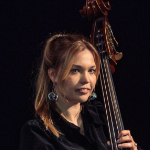Sebastian Jung and the Museum Express
30. December 2023
#1to1dialogues
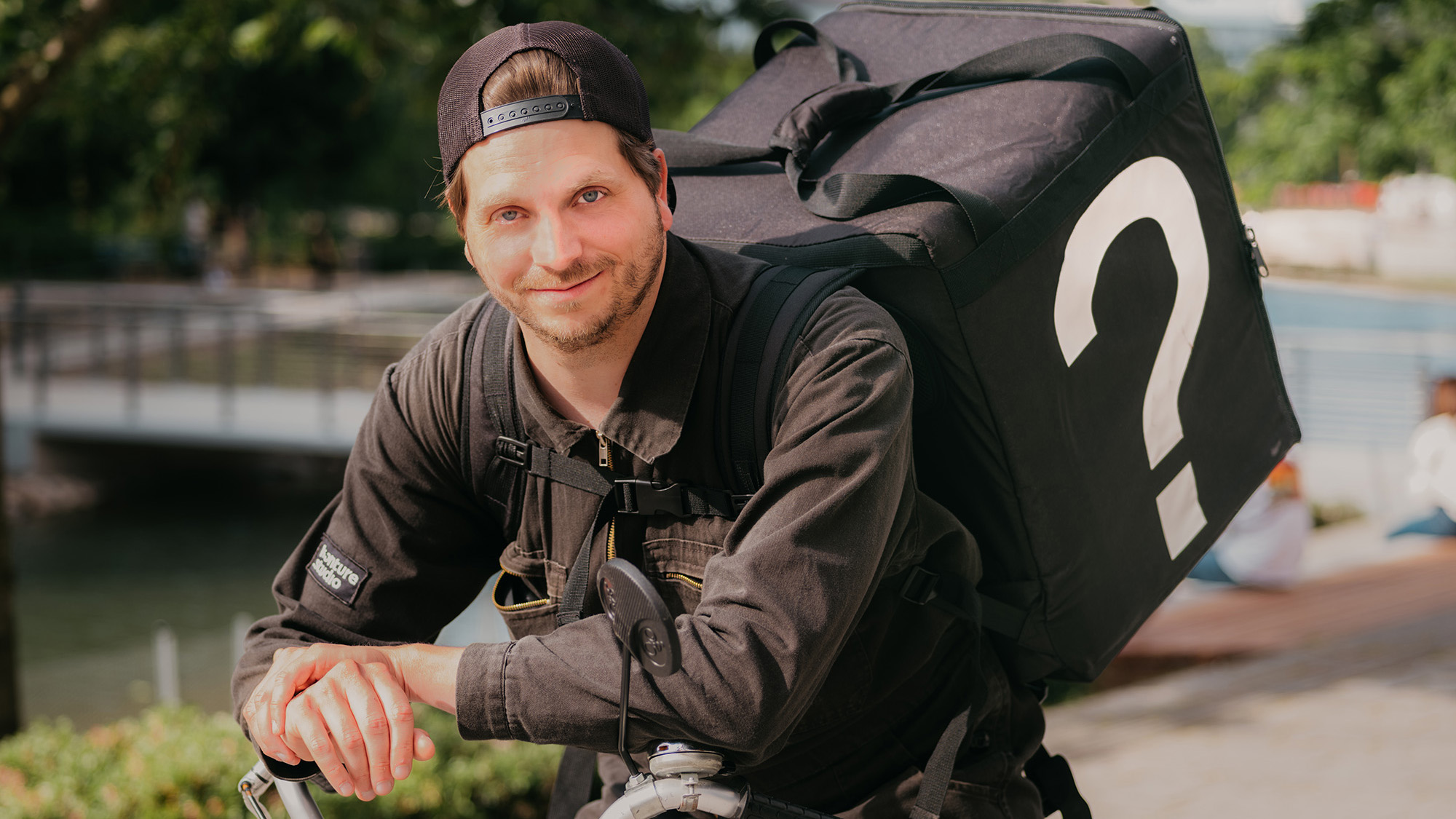 © Kevin Faingnaert
© Kevin Faingnaert
Welcome to this third edition of our interview series 1:1 DIALOGUES that we launched last October. Once a month, Franziska and Christian will talk about a wide variety of topics, always with one personality from the extended 1:1 COSMOS. In October, for example, Franziska walked with violinist Maria Reich about the topic of improvisation and last month Christian had a conversation with tuba player Jonas Urbat about melancholy.
For our third guest, we are leaving our "haven of classical music" and will venture “outside the box“ into the museum sector. There is an inspiring project there that is just as small and intense as the 1:1 CONCERTS. It has equally expanded during the pandemic and now plays with the effect of reduction and surprise: the MUSEUM EXPRESS. Franziska is talking with Düsseldorf designer Sebastian Jung - the inventor of this format.
Franziska: Dear Sebastian, have you omitted or deliberately not done anything today?
Sebastian: (laughs) I should actually have done my tax declaration today and I deliberately decided not to do it and instead dedicated myself to other things.
Franziska: That sounds great. What did you do for instead?
Sebastian: I have a pretty long to-do list that I want to complete before Christmas. So today I repaired my bike and the toilet cistern today. That was the perfect thing to do to avoid the tax declaration. But it doesn't help in the long run, so I will have to do it tomorrow.
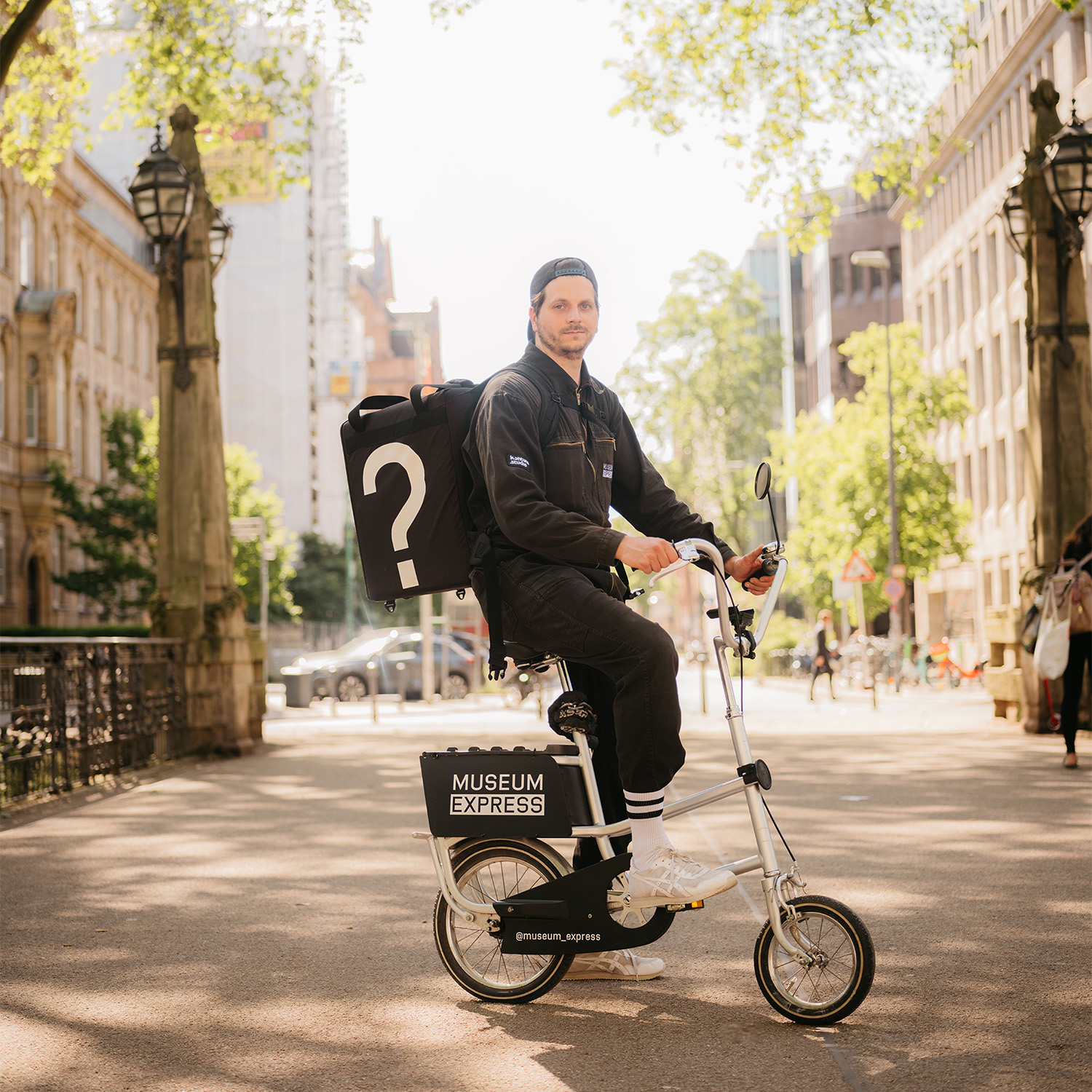 © Kevin Faingnaert
© Kevin Faingnaert
Franziska: Well, unfortunately, taxes are part of the business. You probably also do your tax return for your fantastic MUSEUM EXPRESS project, among other things. We don't know each other personally, but we kind of noticed each other in the wider context of the cultural and creative industries. What exactly is the Museum Express?
Sebastian: I'm actually a graphic designer and illustrator. During the pandemic, in December 2020, I had an idea: that was at the time when all the galleries and museums had to close completely and there wasn't even this "interim solution" with the booked time slots anymore. That really hit me hard at the time, as I love going to art museums and of course need them as inspiration for my work. At that time, much like everybody else, I was sitting in my home office a lot and often looked out of the window. Then I realised that these delivery services were becoming more and more common. All of a sudden there were a lot of new start-ups in the sector. You saw these bike riders with huge backpacks everywhere. It looks insanely stupid when you're driving around with it on your back.
Franziska: (laughs) We always called them turtles, although that would actually be the opposite of "express".
Sebastian: Yes, exactly. But what's actually nice is that this backpack is a cube and hence forms a space inside. So why not exhibit art in this space? And then use it to support museums, galleries and - above all - artists! So I built a mini-museum into this backpack, I installed LED lights and started delivering artworks directly to the people. That way it was possible - people could meet in the stairwell or on a park bench. Simply put on the mask and show the art.
-kevin-faingnaert.jpg) © Kevin Faingnaert
© Kevin Faingnaert
Franziska: But how exactly does that work? Did you bring along a work of art for us today?
Sebastian: Very much so, I've prepared something, apart from my ongoing “exhibition“. That's also why there's a question mark on the box saying that you can't google the artwork in the MUSEUM EXPRESS. An exhibition only lasts three months and we don't reveal what's in the box in advance.
When I'm out and about with my bike and backpack, I'm often asked what's in the box. And then I reply: "It's a secret, you have to order the box" That's the gag, otherwise it would be boring.
There are people, for example, who order the artwork for brunch on Sunday and then invite all their neighbours and friends. And then I come round and place the box on the coffee table, for example, and give a ten-minute presentation with information about the artist. The box is then opened.
Franziska: Ah, you do that before opening it?
Sebastian: Yes, almost before opening, so that the tension is unbearable. You want to know what's inside beforehand. And then the box is in front of you and you have to remain patient. But that's always quite good, because then you've already learn something about your client. And then maybe you think a bit: "hm, what idea does he or she have for the box?"
Franziska: Well, you also talk about it. So you're not just giving a lecture, it's a dialogue?
Sebastian: That's exactly the nice thing about being in someone's living room. It's the other person's comfort zone and I'm actually the one who's nervous. And then you talk to each other, chat away, discuss things. It's all very, very relaxed.
-kevin-faingnaert.jpg) © Kevin Faingnaert
© Kevin Faingnaert
Franziska: Conveying the cosmos of an entire exhibition or artist by reducing it to a single work of art is precisely the strength of this idea. How did you go about curating and organising the "exhibition"?
Sebastian: Well, in the beginning I simply wrote to my favourite artists. After all, I needed someone to exhibit. And I wrote about 17 or 18 emails and actually got 14 replies. Among them were some of the heroes of my youth and that seemed completely absurd to me, because you had to deliver somehow, but you didn't know what you were actually doing - so it was "learning by doing".
In the beginning, I tried to take a small work - a sculpture or a small canvas. And then delivered it to some of my friends. And then to friends of friends. And at some point to complete strangers. One day I realised that just opening the door would become boring. I need a common thread. And of course I always try to be an entertainer and performer to make my artists look good. And that's how it has evolved over time. I've been doing this for two years now and have already made over 400 house calls. And so, of course, I try to curate it as a small event. The presentation beforehand has only been around for about a year and a half. Now the performance is really exploding, it's something to take part in, so it's often interactive.
If you like, Franziska, can we have a look inside the box and see what I've brought you?
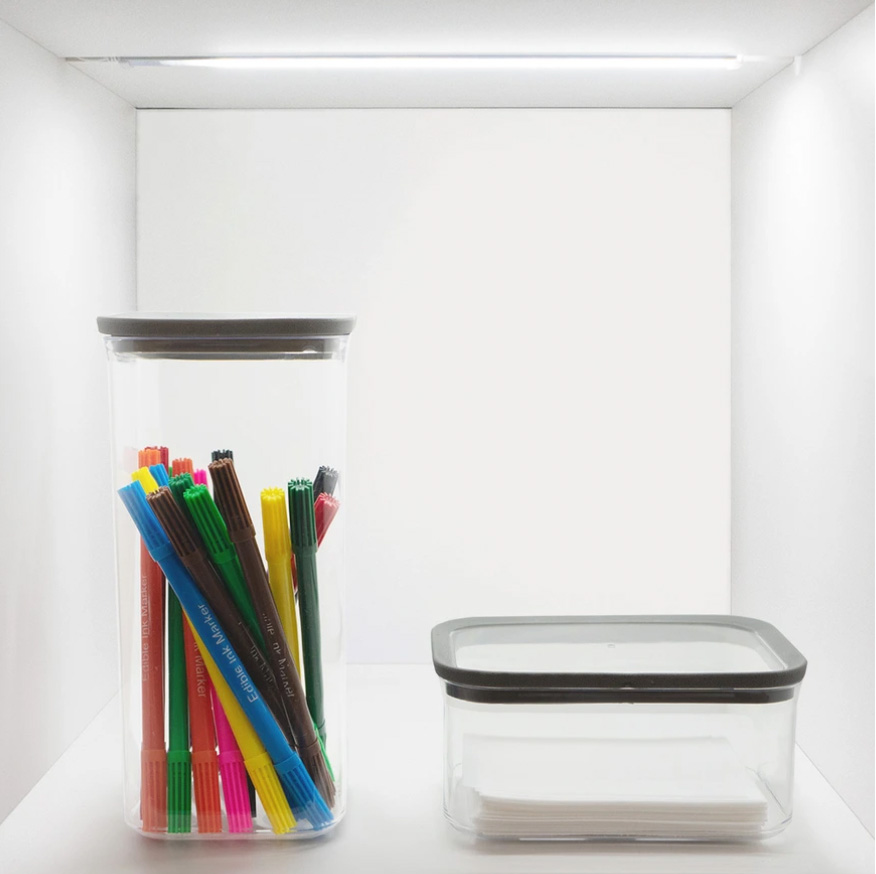
Helmut Smits "Consuming Art" (2023)
Franziska: Yes, I'm really excited, is this a real "blind date" with the artwork?
Sebastian: Exactly. Here you can see the work "Consuming Art" by Helmut Smits from Rotterdam. He had this idea with edible paper and food colouring pens. In this exhibition, we set up a kind of still life on the coffee table with the people at home, everything that was there, i.e. we used bananas, a bottle of soda or something. Everyone was given a piece of edible paper and a pencil and then we painted this still life. So we created our own exhibition in no time at all, everyone had their own little work to start with. And at the end we ate our works together. That is literally "consuming art".
Franziska: It really is a very ephemeral, very personal work of art that you create just for that one moment and that looks and tastes different every time?
Sebastian: Yes, the work only lasted 12 minutes and then it was inside all of our stomachs. It was very, very well received, perhaps because it was completely unexpected and, above all, people looked at the still life first and I didn't say anything about it at first. And everyone was wondering "so what's all that about?" Sometimes people spent up to 20 minutes painting their own works, sometimes just a small sketch. But everyone actually ate everything. At first I thought that not that many people would take part, but everyone consistently ate their own work of art.
Franziska: Great! I also recently saw that you even get love letters from your museum visitors - which is actually an explicit part of the concept of 1:1 CONCERTS where letters are exchanged at almost every concert. I was very pleased to see that you've already received such feedback.
Sebastian: Yes, sometimes it's not so easy with such heartfelt projects and you don't know whether and how things will continue. And then you go to the letterbox in the morning and there's a letter with a very personal message and a thank you note. And you feel that you have really touched someone emotionally, that they have had a special experience - out of the ordinary.
Franziska: What a great resonance And you've mentioned something that is also very important to us at 1:1 CONCERTS: We grew substantially during the pandemic. All around the world, there was a need for this project and, like you, we made a virtue out of necessity. And now, after the pandemic, the concert halls and museums are all open again and people are flocking back in - thankfully. At the same time, these small but precious formats are not just a substitute event or a stopgap. They have a very special quality of their own that is worth protecting - one that cannot be measured in audience numbers, and that is often a hurdle, at least in our project. When we want to show clients the impact and benefits of the project, they are often only interested in the sheer number of spectators and not in the quality of the experience or the depth of the sensations, which in the end remain long in the memories and hearts of the participants and are therefore often more valuable than a concert visit among thousands of other visitors.
How are you experiencing this now, after the pandemic, in collaboration with museums and galleries? Or: How are you developing your format? Are you striving to adapt it to the changed circumstances so that it can continue to have an impact?
Sebastian: Well, at first I thought that after the pandemic it would be over for me too. But in fact, people were still writing me emails saying: "We want you for our birthday party or we want you here at an event". And then I thought, this really doesn't exist in this form yet. Normally you might hire a magician or a clown. But this is something new and special that people simply want to try out or have at their home.
In general, however, I have to say that it's getting more an more difficult for me. In fact, at the beginning it was only 1 to 2 days a week where I said, okay, I'll invest that. Now it's almost 3 to 4 days that I'm working on the project and I slowly have to rethink it from an entrepreneurial perspective. It's actually always best to be at home in people's living rooms, but it's just not sustainable in the long run.
In January, for example, I will start a collaboration with a museum in Neuss, which is being remodelled for three weeks in the summer. During this time, I'm supposed to deliver the exhibition to the public, including schools. That's one of the next ideas anyway, that I go to schools more and combine the concept with a workshop, so that you ask the pupils what they would like to see in the box and you work out the basics of curating and exhibiting together. Otherwise, it probably just needs to become more of a bookable event, for example at trade fairs or company parties.
-kevin-faingnaert.jpg) © Kevin Faingnaert
© Kevin Faingnaert
Franziska: Great ideas! Especially working with children and young people! Perhaps it's precisely these models that are needed to make the museum institution "sexy" again. These temples of high culture, just like theatres and opera houses, are having a really hard time with young people. I only have to mention the word museum to my children and they will roll their eyes. Thanks to your format and your mediation approach, you manage to inspire people of all ages or win them over! Your outfit, the whole "trappings" certainly also play an important role. How did you develop this and why is it important?
Sebastian: I'm a full-time graphic designer - everything has to be designed down to the smallest detail, so there's no other way. At first there was this name MUSEUM EXPRESS, everything was relatively discreetly designed in black and white, and the first costume idea was actually a museum outfit, like a museum attendant or the museum director. But when you imagine a curator, for example, you tend to clichédly think of a champagne glass and scarf. But then I thought: I'm the one who presents and communicates and also wants to allay fears. And that's why in the end it's a guy in overalls who looks more like an artisan than a curator. But I'm the one who usually arrives there with a fiery red head because I’m late with the bike delivery again and then I sit there in a jumpsuit with a baseball cap and trainers, so that's okay from the start. I don't have to sit on the sofa, I can just sit there in my outfit and have a look and maybe even ask a few stupid questions and that's all perfectly fine.
It's about breaking down a barrier or at least overcoming a hurdle for people who have little or no interest in art. Unfortunately, that's what you often learn from a classic museum visit. Your visit is always a cautious one, you try not to cross the red line and keep your distance. And that's why I take my exhibits out at the beginning and hand them to people. "Oh, we can take this in our hands ?" "Yes, you can do anything here!" That's always a lot of fun, simply testing the boundaries together.
Franziska: That's an interesting boundary you're testing! In theatre, we talk about the "fourth wall" between the audience and the actors and the action on stage, which was rightly overcome in the last century by new spatial forms and participatory formats. You do a fantastic job of this with your project and bring culture to the people - at eye level. That totally inspired me. So the element of surprise, the blind date, the close proximity to the audience and the individuality - everything that motivates us at 1:1 CONCERTS also plays a major role in your project.
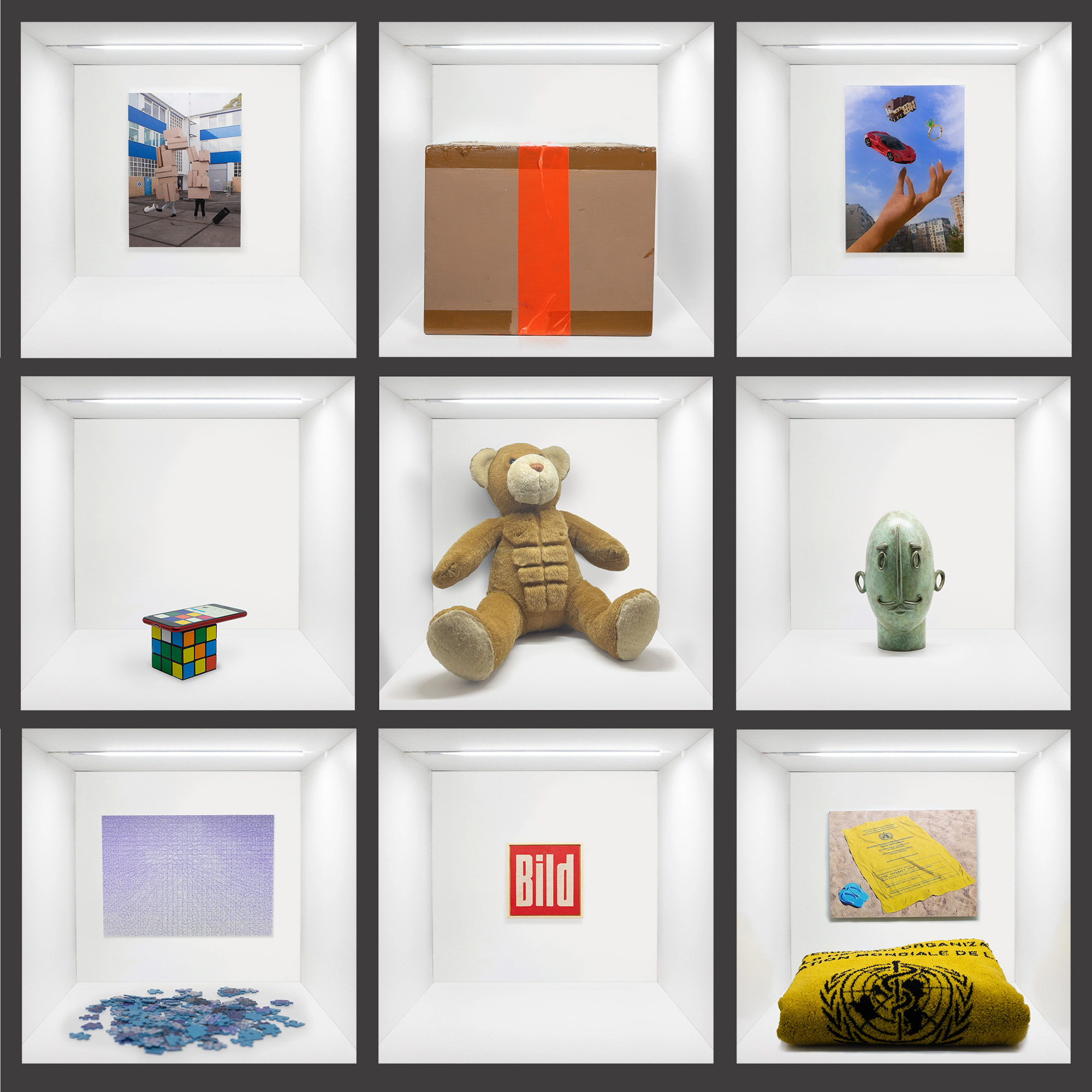
Exponate im Museum Express von Willem de Haan, Karla Zipfel, Hoker One, The Internet Shop. PutPut, Anna Rayzynska, Biancoshock, Hannes Niehüser, Jochen Mühlenbrink
I have one last question for you: If you had one wish for the future of the museum industry, what could they learn from you and your project?
Sebastian: When I see the reactions to MUSEUM EXPRESS, I would like to see exactly the same kind of response and closeness in a large museum. There are so many ideas out there. I mean, why is the type of presentation always the same, usually the white cube? Why not just try something different and do some crazy new stuff? I think entertaining and interaction are important, there are already many good approaches and solutions where the audience is actively invited to take part.
Franziska: Thank you, Sebastian, for bridging the gap between the two disciplines, together with me. Thank you for inventing this format and bringing it into the world. I hope that you can do the same next year and continue its development.
